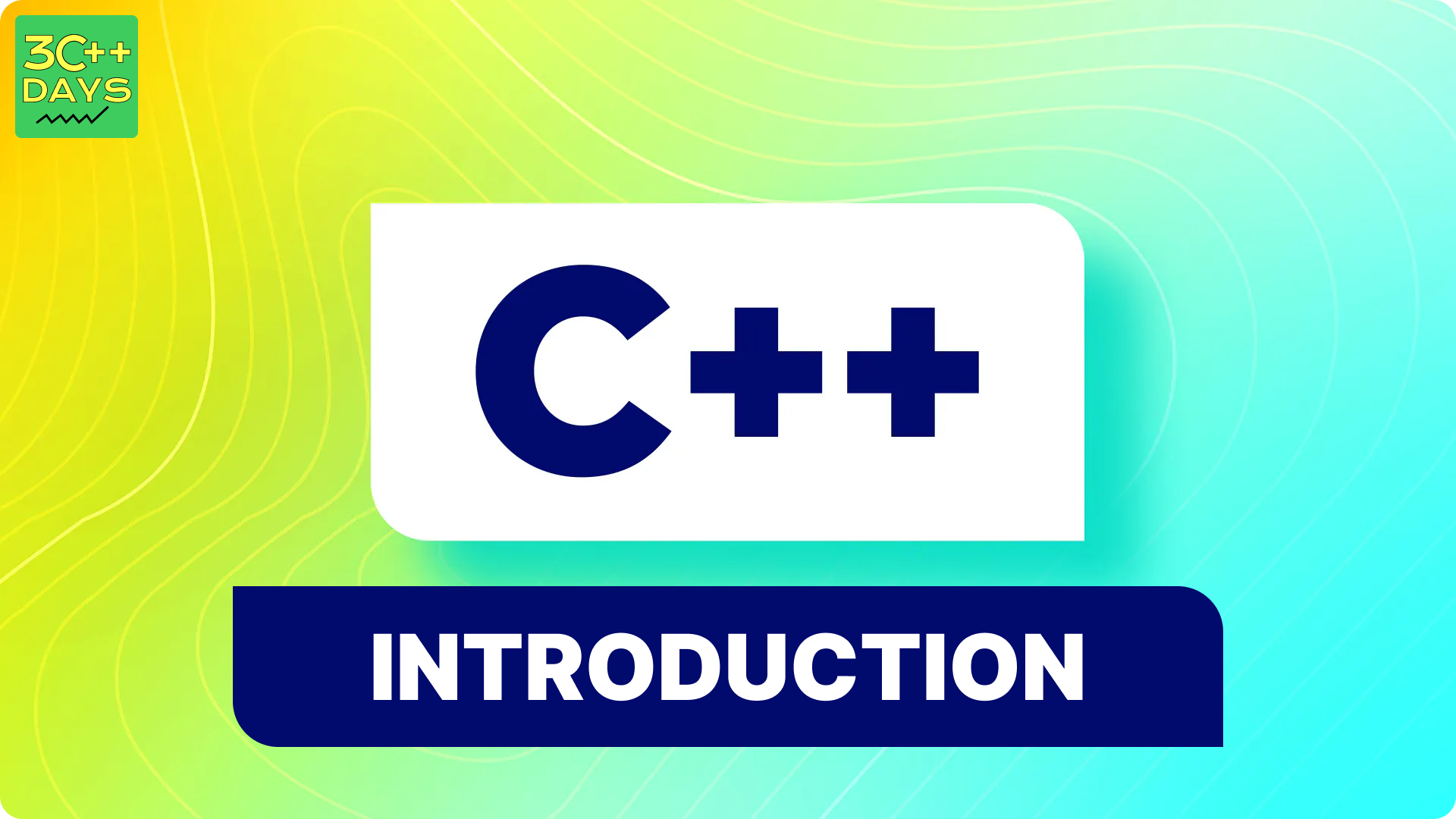Introduction to CP
Introduction to C++
C++ is a general-purpose programming language that was developed as an enhancement of the C language to include object-oriented paradigm. It is an imperative and a compiled language.C++ is a powerful and versatile programming language that is widely used for a range of applications and is well-suited for both low-level system programming and high-level application development.C++ is a middle-level language rendering it the advantage of programming low-level (drivers, kernels) and even higher-level applications (games, GUI, desktop apps etc.). The basic syntax and code structure of both C and C++ are the same.
Some of the key points to note about the programming language are as follows:
- Simple: It is a simple language in the sense that programs can be broken down into logical units and parts, has a rich library support and a variety of data-types.
- Machine Independent but Platform Dependent: A C++ executable is not platform-independent (compiled programs on Linux won’t run on Windows), however they are machine independent.
- Mid-level language: It is a mid-level language as we can do both systems-programming (drivers, kernels, networking etc.) and build large-scale user applications (Media Players, Photoshop, Game Engines etc.)
- Rich library support: Has a rich library support (Both standard ~ built-in data structures, algorithms etc.) as well 3rd party libraries (e.g. Boost libraries) for fast and rapid development.
- Speed of execution: C++ programs excel in execution speed. Since, it is a compiled language, and also hugely procedural. Newer languages have extra in-built default features such as garbage-collection, dynamic typing etc. which slow the execution of the program overall. Since there is no additional processing overhead like this in C++, it is blazing fast.
- Pointer and direct Memory-Access: C++ provides pointer support which aids users to directly manipulate storage address. This helps in doing low-level programming (where one might need to have explicit control on the storage of variables).
- Object-Oriented: One of the strongest points of the language which sets it apart from C. Object-Oriented support helps C++ to make maintainable and extensible programs. i.e. Large-scale applications can be built. Procedural code becomes difficult to maintain as code-size grows.
- Compiled Language: C++ is a compiled language, contributing to its speed.

Key Features of C++
Object-Oriented Programming (OOP)
C++ supports the principles of OOP, enabling developers to create classes, objects, inheritance, polymorphism, encapsulation, and abstraction. This paradigm helps in organizing and structuring code for better maintainability and reusability.
Standard Template Library (STL)
The Standard Template Library in C++ provides a collection of classes and functions that implement various common data structures (like arrays, vectors, lists, maps) and algorithms (such as sorting, searching). This library simplifies complex tasks and enhances productivity.
Performance and Efficiency
C++ allows fine-tuning of performance-critical parts of code by providing control over memory management and offering features like inline functions, which can significantly enhance execution speed.
Portability
C++ code can be compiled on different platforms with minimal changes, making it a portable language suitable for cross-platform development.
Getting Started
To start programming in C++, you'll need a development environment with a C++ compiler. Popular compilers include GCC, Clang, and Microsoft Visual C++. You can choose an Integrated Development Environment (IDE) like Visual Studio, Code::Blocks, or CLion to write and compile your code efficiently.
Here's a simple "Hello, World!" example in C++:
#include <iostream>
int main() {
std::cout << "Hello, World!" << std::endl;
return 0;
}
Save this code in a file with a .cpp extension, compile it using a C++ compiler, and execute the resulting program to see the output.
What's Next?
- Learn Basic Syntax: Dive into the syntax, data types, control structures, and functions in C++.
- Explore Advanced Concepts: Study topics like pointers, memory management, templates, and exception handling.
- Practice, Practice, Practice: Solve programming challenges and work on projects to reinforce your learning.
- Refer Official Documentation: Utilize online resources, books, and official C++ references to deepen your understanding.
C++ is a vast language with numerous possibilities. Enjoy your journey in mastering this versatile programming language!
Feel free to expand upon this content and include more details, examples, or exercises based on your audience's needs and the depth of the tutorial you're planning to create.